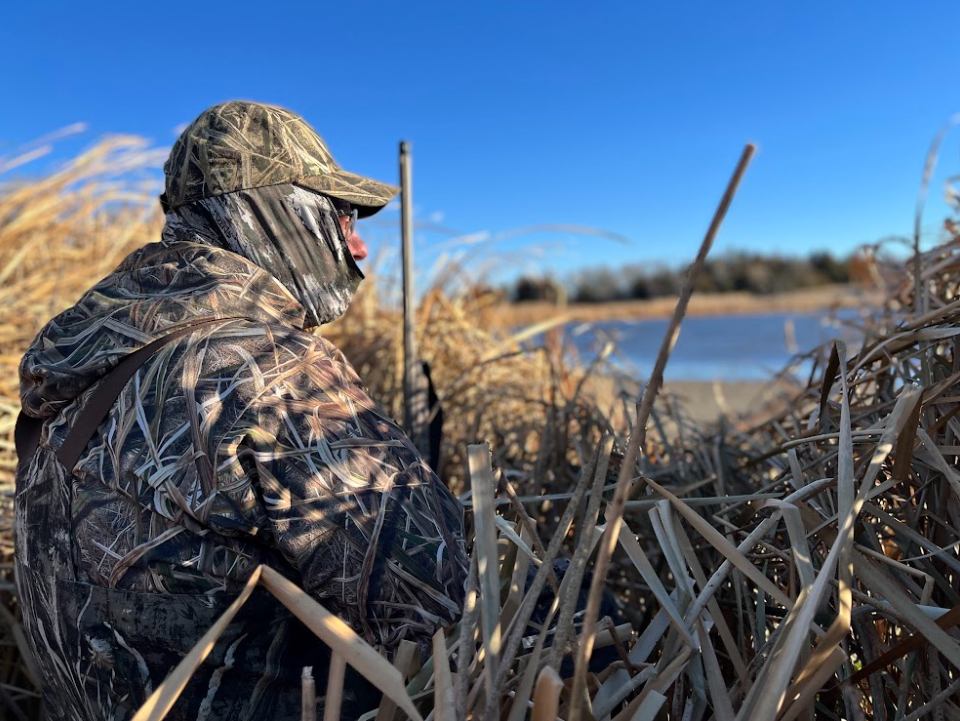
Joshua Haiar/South Dakota Searchlight
In response to hundreds of opposition comments, the Game, Fish and Parks Commission curtailed a proposal to expand waterfowl licenses for hunters from other states.
“We’re not always going to rubber-stamp everything,” said Commission Chair Stephanie Rissler.
The amended proposal, which affects duck and goose hunting, passed the commission on a unanimous vote. It increases the number of nonresident waterfowl licenses by 105, rather than the previously proposed 315. The extra licenses can only be used on private land in some parts of eastern South Dakota, but not in the northeastern corner of the state, where resident hunters have complained of too much competition for a suitable hunting spot.
The move increases the nonresident license allocation from 6,300 to 6,405. Resident licenses are unlimited.
After lawmakers empowered the commission to adjust nonresident license caps in 2014, the authority was not used until last year, when the commission added 100 licenses to be used on private land in two areas of the northeastern corner of the state, and another 200 licenses to be shared among residents and nonresidents in a large area outside the northeast. That resulted in pushback from some resident duck hunters.
The current proposal was altered after hundreds of public comments against it and seven in favor. Multiple members of the public and organizations including the South Dakota Wildlife Federation, Izaak Walton League of America, and the South Dakota Waterfowl Association testified in person against the plan.
“Our public trust resources are not for sale,” said Dana Rogers, the South Dakota Wildlife Federation’s new executive director.
The proposal for additional nonresident licenses came in response to a long trend of decline in waterfowl hunting. Waterfowl hunter numbers in South Dakota dropped 47% from 32,217 in 2003 to 17,042 in 2022.
One factor in the decline is vanishing habitat and hunting areas, according to a 2017 Game, Fish and Parks survey of waterfowl hunters. Over 70% of respondents reported being “very concerned” about the loss of hunting opportunities due to a loss of wetlands. One of the culprits is “drain tile” – perforated pipes in the soil to drain unwanted water from farm fields.
“Wetlands are being drained left and right,” testified Chuck Dieter, professor emeritus of natural resource management at South Dakota State University. He said that has resulted in fewer hunting spots, putting more pressure on the wetlands available.
Eric Paulson of Pierre pointed the commission to Ducks Unlimited data showing a decline in waterfowl population numbers.
“Duck numbers are dropping and hunter numbers are also dropping due to pressure and competition,” he wrote. “As the duck numbers drop, the opportunities drop, and hunters get more congested chasing few birds in the same spot.”
Additionally, some hunters have said getting licensed and learning the rules of how, what, when and where to shoot ducks is a barrier to entry for people who did not grow up hunting.
Even some nonresidents submitted comments in opposition to making more licenses available for them.
“We have come to SD to enjoy the great hunting,” wrote Tim Anderson of Mankato, Minnesota. “However, that has really begun to change over the last 10 years. Increased pressure from residents and NRs [nonresidents] has increased the hunting pressure on public lands and gaining permission on private land has become much, much harder.”
Out-of-state duck hunters have been controversial in South Dakota for decades. When World War II veterans returned to South Dakota and found nonresident duck hunters on their favorite hunting spots, they pressured the Legislature to take action.
In 1947, the Legislature banned nonresidents from duck hunting, but the ban was repealed in 1970. Debates ensued, ultimately resulting in a gradual increase in nonresident waterfowl hunting licenses.
In 2014, the Legislature removed legal limits on nonresident licenses and passed control of licensing decisions to the GF&P Commission. That law also prohibits the commission from increasing license numbers by more than 5% of the previous year’s allocation.
“Just because you are allowed to up that, does not mean you should do that,” testified Paul Lepisto, with the Izaak Walton League of America.
Dick Werner, the Republican former lawmaker from Herried who sponsored the 2014 bill, spoke in favor of the proposal during the previous commission hearing.
“You are asked to make tough decisions that not everyone agrees with; that is the nature of public service,” he said. “Your task is to make the decision that is in the best interest of South Dakota.”
South Dakota’s next duck season runs from September to January.
